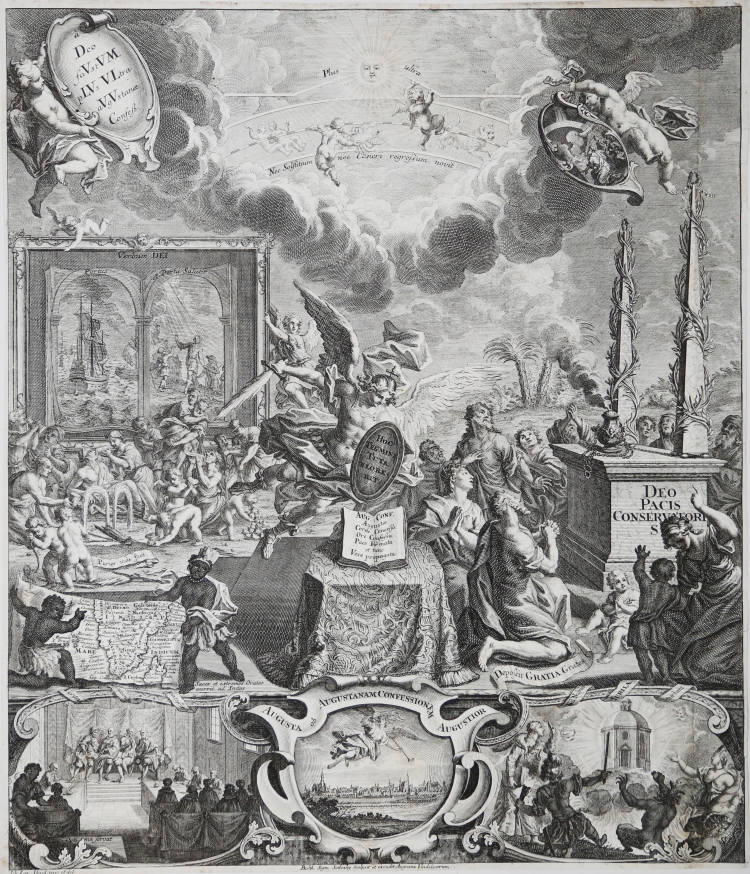



| Reference: | S46763 |
| Author | Balthazar Sigismond SETLEZKY |
| Year: | 1730 |
| Measures: | 427 x 495 mm |


| Reference: | S46763 |
| Author | Balthazar Sigismond SETLEZKY |
| Year: | 1730 |
| Measures: | 427 x 495 mm |
Augsburg Confession commemorative sheet with allegory.
From a drawing by Johann Lorenz Haid (Kleineislingen 1702 - Augsburg).
Etching and engraving, 1730, signed in the plate: "Joh. Lor. Haid - inv. et del. - Balth. Sigm. Setlezky sculpsit excudit Augustae Vindelicorum".
Allegorical sheet commemorating the 200th anniversary of the Augsburg Confession under Emperor Charles V (1530). Includes a very rich allegorical apparatus, as well as depiction and small general view of Augsburg. In the centre St. Michael with sword and open book on the table; prostrate figures in front of a monstrance on a stone altar with two columns on the right; at the bottom three small scenes: the temple on the bottom right, the Augsburg cityscape with angel in the centre bottom and the Augsburg Reichstag on the bottom left. On the left side a kind of allegory of water; two coloured natives hold a drape with a map of South India drawn on it with putti unfurling a drape with the motto Purior inde fluit.
The Augsburg Confession, also known as the Augustan Confession or the Augustana from its Latin name, Confessio Augustana, is the primary confession of faith of the Lutheran Church and one of the most important documents of the Protestant Reformation. The Augsburg Confession was written in both German and Latin and was presented by a number of German rulers and free-cities at the Diet of Augsburg on 25 June 1530. The Holy Roman Emperor, Charles V, had called on the Princes and Free Territories in Germany to explain their religious convictions in an attempt to restore religious and political unity in the Holy Roman Empire and rally support against the Ottoman invasion in the 16th-century Siege of Vienna. It is the fourth document contained in the Lutheran Book of Concord.
Beautiful proof, printed on contemporary laid paper, copperplate trimmed or with very thin margins, numerous pencil marks on verso, otherwise in excellent condition.
Balthazar Sigismond SETLEZKY (Augsburg 1695 - 1774)
|
Polish-born engraver, he was a pupil of Joh. Andreas Pfeffel the Elder. He engraved after other artists such as Watteau, les Roos, etc.
|
Balthazar Sigismond SETLEZKY (Augsburg 1695 - 1774)
|
Polish-born engraver, he was a pupil of Joh. Andreas Pfeffel the Elder. He engraved after other artists such as Watteau, les Roos, etc.
|